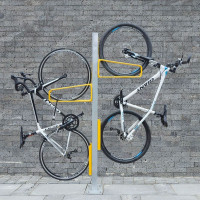-
Australia
Copyright © 2025 Powered by BCI Media Group Pty Ltd
Confirm Submission
Are you sure want to adding all Products to your Library?
Contact Detail
Phone Number
Kirsten Langer - National Business Manager
1800 249 878
Jon Rutledge - Founder
1800 249 878

With the number of cyclists in Australia increasing, and the steps taken by major cities around the country to become more bicycle-friendly, it’s fair to say that Australians are a bike-loving country. Whether it’s a casual ride to and from school, a lycra-clad pack ride on a Thursday morning, or an easy Sunday roll by the beach, you’ll be sure to see plenty of Aussies out and about on bikes.
If you’re a cyclist or are looking at buying a bike to make your ride to university easier, there are a few laws—and some exceptions—that you’re going to want to pay attention to. And be careful, because breaking some of these laws can come with a pretty hefty fine.
Standard laws
In Australia on the whole, cyclists must follow the same rules as drivers: stop at stop signs, only turn where you’re allowed to, don’t ride up one-way streets etc. However, there are some laws that are specific to cyclists. Across the country there are a number of cycling laws that remain the same, no matter which state you live in:
Most of these laws are common sense—stay visible, ride the right way, be safe—and are adopted to make sure both cyclists and drivers stay safe. As well as these standard laws, each state has its own specific cycling laws—and interestingly enough, not every state feels the same way about bike helmets, or riding on the footpath.
Below we’ve listed some of the differences you’ll find, depending on the state you’re in.
New South Wales
New South Wales recently introduced some new cycling laws, and they’ve been met with significant backlash and public complaint. There was even a proposed law to require cyclists to carry ID at all times, but this never went through.
Fines for cycling offences range from $71 up to $425 across the board, so always be sure to wear a helmet, stop at red lights, don’t hold on to moving vehicles—and generally just ride safely.
Victoria
Being such a bike-friendly city, Melbourne has a large network of bike paths, and laws in place to protect cyclists, but also to make roads and footpaths safer for other users:
As such, they also have some pretty strong fines in place, too.
Queensland
Queensland takes a tough stance on helmets, and has equally tough fines to match:
South Australia
South Australia’s cycling laws get quite specific:
The fines are a little more lenient than in other states, but are clearly in place for safety reasons:
Western Australia
Western Australia’s cycling laws are quite straightforward, in line with their push to make Perth a more bike-friendly city:
Fines range from $50 for not wearing a helmet, to $100 for incorrect lighting at night, or riding closer than two metres behind a moving vehicle.
Australian Capital Territory
Canberra is a relaxed mix of all other states’ laws:
Cycling fines in the Australian Capital Territory all come in at $146, whether you’re not wearing a helmet, you’re speeding, you’re carrying someone else on your bike, or you’ve got no hands on your handlebars.
Tasmania
Tasmania’s bike laws are aimed at users staying safe, and are a bit more laid back than other states:
Tasmania’s cycling fines, however, are very high, with fines ranging from $260 to $650—so you always want to make sure you’re riding safely in Tasmania.
Northern Territory
The Northern Territory has some of the most relaxed bike laws around, with all fines coming in at a flat $25. Some people argue that this relaxed attitude encourages more people to take up cycling, thereby making cyclists more visible, and making cycling safer overall.





Save Company
Add All Products to My Library
Send Meeting Request to this Supplier